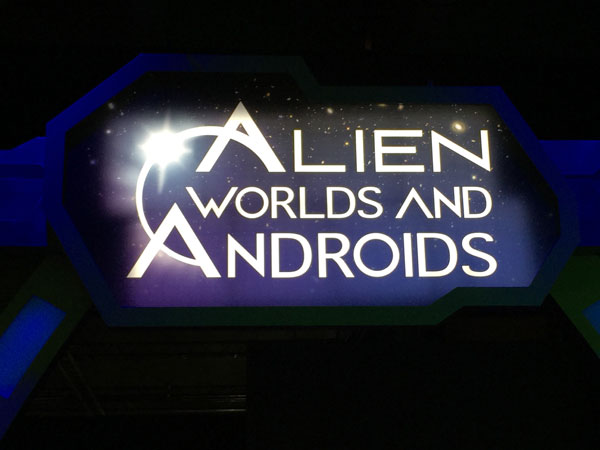
When I was young, 2015 felt like the distant future. By that point, we’d have flying cars, regular space travel, and monorails everywhere! Sadly, the promise of Back to the Future Part II has not arrived. We’ve made progress, but it feels like we should be moving faster towards a brighter future. This summer, the exhibit “Alien Worlds and Androids” is offering a few hints at our potential. We’re exploring Mars and searching far and wide for new forms of life. Advanced technologies are giving scientists the ability to look further and make amazing discoveries.
The search for alien life goes beyond outer space, however. A robotic sub named ALVIN is exploring deep sea vents on the ocean floor, for example. Microbiomes inside our own bodies also fit the definition of alien life. It may seem like a stretch, but there’s plenty to discover without leaving the planet. That isn’t as much fun, however.
The most impressive part of this exhibit is a Mars Rover simulator that uses seat vibrations and an enclosed space to help depict the Red Planet on screen. When you put “alien worlds” in an exhibit’s title, it helps to get ambitious with how you present it.
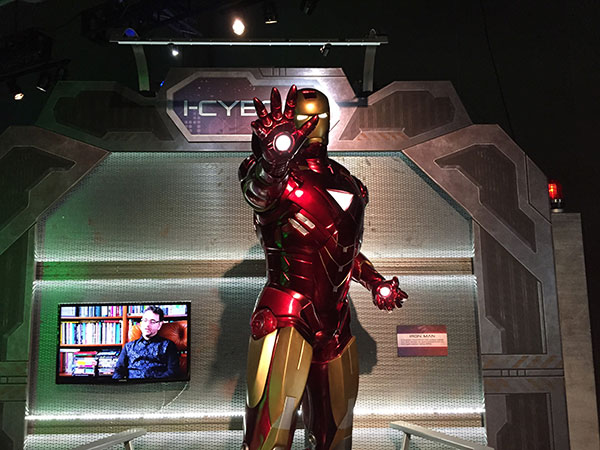
Pop Culture and Science
Mixed in with the science are lifestyle robots and other models from sci-fi films, including Iron Man, C3PO, and the Alien. There are even a few old-school examples like Robbie the Robot and Gort. These fun inclusions help with visitors who aren’t as engaged by text about light waves and the Turing test. They do feel a bit strange when there’s little context for any real-life efforts, however.
The Iron Man suit label says the following: “In the entirely fictional Marvel Comic universe, engineer Tony Stark becomes the mechanically enhanced Iron Man to gain superhero fighting abilities.” There’s no material on why Iron Man is here beyond providing a cool photo op. It was impressive to stand by the imposing suit, but it would have been more interesting to connect it to modern androids.
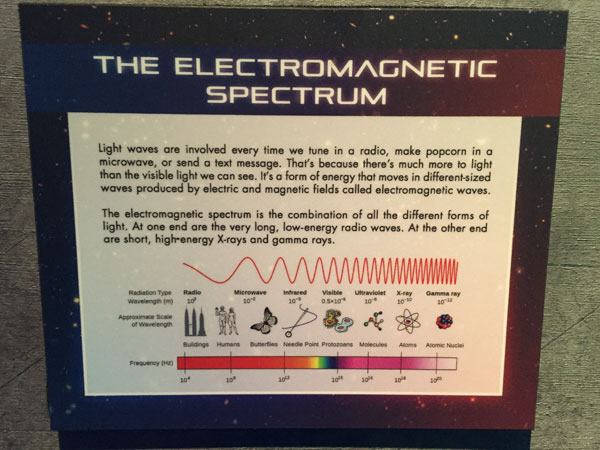
Alien Worlds and Androids has been touring the country for several years; it opened just across the state in Kansas City back in May 2013. It isn’t packed with content but has enough to make a visit worthwhile. NASA and its Jet Propulsion Laboratory (JPL) provided material for the exhibit, so there are definite real-world connections. For an added bonus, the local St. Louis R2 Builders Group is on hand with some droids every Saturday. I visited on a Sunday but wish that I’d had a chance to see their work. It’s a good time to be a fan of sci-fi and space exploration in St. Louis.
ROBOTS IMAX Film
An added bonus for this trip was catching the National Geographic film ROBOTS on the giant Omnimax screen. Opening around the country on June 5, 2015, this Mike Slee movie offers a glimpse at the incredible robots being created today. Simon Pegg’s voice narrates the action as a humanoid RoboThespian that should be in Disney’s parks. It’s a light-hearted look that still manages to offer some intriguing content. We see a wide range of robots designed for very different purposes. Some do simple household tasks like filling a glass while others perform important rescue missions.
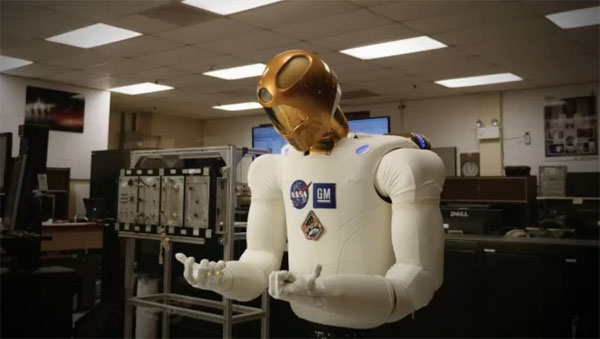
The challenge with the large-screen format is creating informative content that also entertains the masses. Many who visit a local science center don’t want a lecture on the potential of robotics. Watching the machines dance is more fun. Pegg’s offbeat delivery keeps the details light without dumbing down the material. I’ve seen plenty of IMAX films that fail at that balance. These robots are being designed to perform valuable tasks, and the importance shines through in the entertaining 40-minute film. My six-year-old daughter also had a great time and was engaged right to the end.
Exciting Possibilities for Robotics
Much of the work that we see with androids is happening in labs at Berkeley, NASA, and other forward-thinking places. I don’t expect to have robots in my house next year, but it may happen in my lifetime. This film shows the many hurdles that must be overcome to make robots perform human tasks. Walking on uneven ground, folding a towel, and putting away the dishes are not so easy to program.
Even so, there is tremendous potential for robots to assist us. The DARPA Robotics Challenge gave brilliant minds the challenge to build robots that could help with disasters like the 2011 Fukishima earthquake in Japan. Real-world applications go well beyond cleaning our homes.
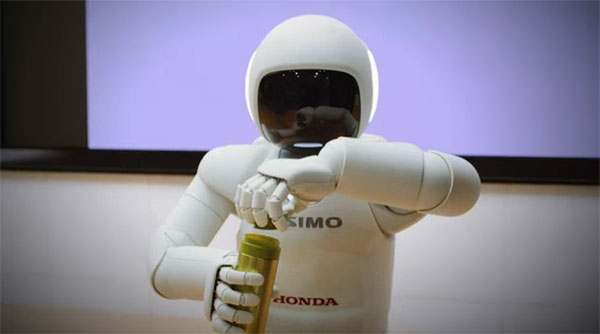
ROBOTS only scratches the surface of the story, but it’s still a great primer. I’ve found myself scouring the Internet for more information on “HERB THE BUTLER”, “ROBONAUT”, and the many other examples from this movie. There’s also a brief look at some creepy androids that haven’t surpassed the uncanny valley. It’s a bit unsettling to think about the possibilities in that realm, but there are also intriguing opportunities. Forward-thinking minds should find a lot to like in this film.
Sources: Saint Louis Science Center, National Geographic
The images in this post from ROBOTS are screen shots from the movie trailer. Images are © National Geographic Society.
Related Articles: Alien Worlds and Androids
Book Review: Leaving Orbit by Margaret Lazarus Dean
The Dream Called EPCOT and an Optimistic Future
Support The Tomorrow Society with a one-time donation and buy me a Dole Whip!
This post contains affiliate links. Making any purchase through those links supports this site. See full disclosure.



Would love to see this! Hope it comes to Atlanta~
Both the exhibit and movie were good fun. I always want to see more, but it’s hard to complain!